#Josh Bonati
Explore tagged Tumblr posts
Text
Someday I Will Bask in the Sun by SRSQ
#music#srsq#kennedy ashlyn wenning#kennedy ashlyn#daisrecords#dais records#chris coady#josh bonati#omar yakar#dais#leigh violet#Bandcamp
36 notes
·
View notes
Text
Sterling Toles - Got Flicked (Instrumental)
released July 22, 2023
Sterling Toles - producer (Ensoniq EPS, VS-1880, Alesis Ion, vibraphone)
Josh Bonati - mastering
Mike Blank - alto saxophone
Rafael leafaR - ewi, flute, bass flute
yakoob - synth bass, synth pad
Kesswa - background vocals
2 notes
·
View notes
Text
Robert Ascroft presents: Dorian Gray
The track also featuring Ora Cogan

Freaky videoclip ! it's a cool song
Robert Ascroft's Echo Still Remains album (out this Friday February 14th) via Hand Drawn Dracula features an incredible cast of collaborators from the likes of Christopher Owens (Girls), Kid Congo Powers, Ora Cogan, Britta Phillips (Luna), Ruth Radelet (Chromatics), and more.
instagram
With a background in Los Angeles as a Hollywood photographer and director, it makes sense that Ascroft taps into his musician side with such a collaborative approach involving some of his closest friends in the music world. He aims for the cinematic allure of Wim Wenders or David Lynch, and it wass engineered by Ted Young (Rolling Stones, Kurt Vile, Sonic Youth), mixed by Larry Crane (Elliott Smith, The Shins), and mastered by Josh Bonati (Mac DeMarco, Slowdive).
Following the Christopher Owens (Girls) collab “Should’ve Stayed In Bed, on Thursday Ascroft will be releasing “Dorian Gray,” the video and album track collaboration with Ora Cogan.
Stream Dorian Gray:
youtube
Visionary director, photographer and producer, Robert Ascroft unveils a captivating musical odyssey akin to the cinematic allure of Wim Wenders' "Until The End Of The World" and the ethereal resonance found in 4AD's This Mortal Coil. Emerging as a prominent photographer in the 2000s, Ascroft forged his path through collaborations with luminaries of the Oscars, Grammys, Tonys, and Emmys. With an innate ability to capture the essence of his subjects through his camera lens, he redefines photography, infusing it with depth, emotion, and narrative. A classically trained guitarist turned music producer, Ascroft weaves intricate melodies and evocative songwriting with cinematic narratives.
Drawing from a diverse array of talented friends, Ascroft curates a mesmerizing ensemble of vocal performances featuring luminaries such as Zumi Rosow (Black Lips), Kid Congo Powers (The Cramps, Gun Club), Tess Parks, Ruth Radelet (Chromatics), Britta Phillips (Luna), and more. With Ascroft's multi instrumental performances on guitar, bass, and keys, complemented by the rhythmic contributions of friends Derek James and Roger Brogan, the album takes on a rich and dynamic sonic journey.
"Echo Still Remains'' transcends traditional musical boundaries, beckoning listeners into a world crafted from Ascroft's vivid imagination. Each track unfolds like a technicolor scene in a cinematic narrative, with each melody and lyric evoking a sense of profound introspection and wonder. Accompanied by stylized music videos in Ascroft's distinct visual world, "Echo Still Remains" emerges as a multifaceted work of art, inviting listeners to stir the soul and lose themselves in a world of sound and sensation.
0 notes
Photo
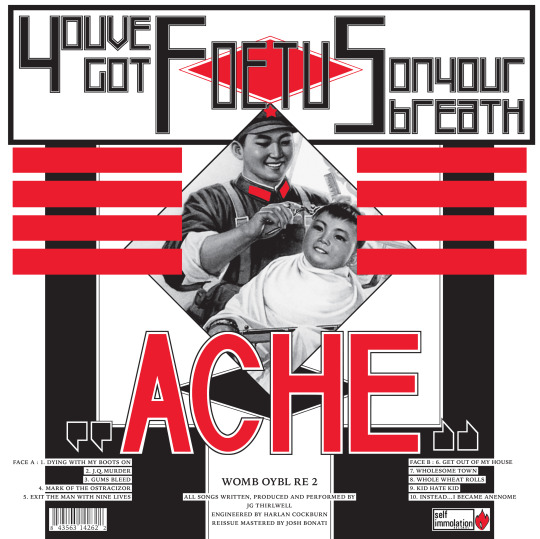

Ectopic Ents is proud to announce the long-awaited vinyl reissue of the second Foetus album, ACHE, to coincide with it’s 40th anniversary. Released under the moniker You’ve Got Foetus On Your Breath, the ACHE album was originally released in 1982 on JG Thirlwell’s Self Immolation label, whilst he was resident in London. It was recorded at Lavender Sound studio in South London and engineered by Harlan Cockburn.
On its release it was acclaimed by the music press, John Peel and even cited by Leonard Cohen on more than one occasion. Over the years the album has become a highly sought-after collectors item.
The 2022 reissue was meticulously remastered by Josh Bonati and is pressed on white vinyl in a limited run of 1000. The album is packaged with a reproduction of the original promo poster from the album and a download code for the album in either high quality 320kbps mp3 or wav files. In addition, each order includes a 5″ x 5″ sticker of the album cover art personally signed by JG Thirlwell.
You can order the album at www.foetus.org and https://jgthirlwell.bandcamp.com/ (and yes, it's Bandcamp Friday!)
“Ache is possessed by a bristling, maniacal intelligence which spews out a jostling, surreal collage of subverted musical and verbal cliches, wired word associations, epigrams and sheer invective with frantic urgency and gleeful black humor. Ache is one of the most violently compelling records I’ve heard in ages.” Mat Snow, NME 12.11.1982
#Ectopic Ents#Foetus#ACHE#You’ve Got Foetus On Your Breath#JG Thirlwell#Self Immolation#Lavender Sound#Harlan Cockburn#John Peel#Leonard Cohen#Josh Bonati#Mat Snow#NME
26 notes
·
View notes
Photo
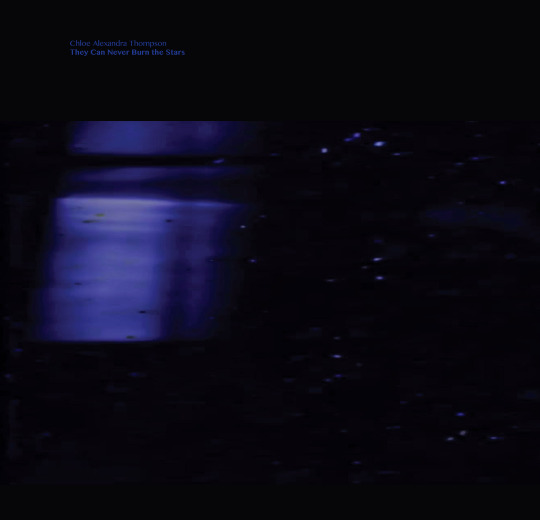
Happy release day to Chloe Alexandra Thompson! Thank you for working with Sige records and trusting us with your vision and your story!
Chloe Alexander Thompson “They Can Never Burn the Stars” LP
Available here: https://sigerecords.bandcamp.com/album/they-can-never-burn-the-stars
Track listing: 1. Improv 2. Pulse Ocean 3. Nocturne Voice 4. An Exchange 5. Glass Bits 6. Touch modality LP version with jacket and printed insert. 330 copies, 100 on opaque light blue. Sleeve art by DB Amorin, design by F. Coloccia. All songs except Touch Modality recorded on a 6.2 speaker array at Pioneer Works, NY * Track “Touch Modality” (digital bonus) recorded on a 14 subwoofer array at Pioneer Works, NY Recording engineer: Federico B. Romero Technical Director: Kyle Keays Hagerman Technician: Matthew Mann Track “Nocturne Voice” uses Spectral sound processing and spatialization software developed by Tommy Martinez. Mixed by Ben Greenberg at Circular Ruin Studio in Brooklyn NY, USA Mastered by Josh Bonati at Bonati Mastering NYC Art by DB Amorin Design by Faith Coloccia Notes by Eleanor Ford "Pulse Ocean" video by DB Amorin Album title is inspired by a story shared by the Sicaugu Oyate people with my family which influenced these soundings. This resides as an irrevocable truth despite what other messages we might get along the way; Inside us there is love, we are loved, we are full of wonder. * With this consider how we may reorient our spirits and blood memory toward this truth, and justice. ** * from Reuben Quinn’s language teachings ** In response to Emily Johnson’s prompt ‘How can we orient our cells towards justice?’
SIGE 108
5 notes
·
View notes
Audio
VA - Tsonga Tremors: Explorations in Tradition, Technology & South African Dance Music (1983-1991)
In the last decade, the breadth of plugged-in African music has become increasingly apparent. Samplers and synths have spread across the continent; nowhere is this more striking than in South Africa, where the end of apartheid coincided with the gradual move away from funk and soul-based township sounds and the emergence of electronic styles. Enter Shangaan Electro, a seminal compilation released in 2010 of 180-plus bpm South African dance tracks; its rapid dispersal through global dance channels introduced ecstatic audiences to a previously marginal scene. Shangaan Electro has its own prehistory in electronic variations of neo-traditional Tsonga music (Tsonga has replaced Shangaan as the favoured designation since the 1994 national elections). A new style materialised, pioneered in the early 1980s, integrating Western elements with electrified neo-traditional sounds, known as Tsonga Disco. Tsonga Disco emerged at a time when apartheid-dictated radio censorship laws exerted near-impenetrable control over radio airwave access. Despite the restrictions, a raft of Tsonga musicians rose to national prominence. Tsonga Tremors highlights a small but necessary sign of an emerging future. A stunning example of home-grown magic; something both organically arrived at and politically expediated through a cross-wiring of local rhythms, imported dance-pop, cultural censorship, emerging technology and limited means that became the catalyst in shaping the future of South African dance music, paving the way for Shangaan Electro’s international emergence nearly two decades later. This compilation seeks to revive an important moment in Tsonga music history. These 18 tracks compiled by chOOn!!, a label specialising in obscure, archival and forgotten releases, should serve as a necessary starting point. Featuring early Shangaan-influenced dance music from legendary producers Paul Ndlovu and Richard Siluma alongside lesser-known Tsonga Disco and neo-traditional rarities from South Africa (1983-1991), they offer a disorientating and frenetically accelerated rhythmic bricolage of programmed drum patterns, cascading percussion, squeezebox keyboard lines and truncated vocal interjections sung in rich harmony. Infinitely absorbing and tangled with rhythm in a knotty osmosis between beat and pitch. The effect is both ecstatic and unusually elegiac, a DIY brand of pastoral neo-traditional soul, amplified minimalism and infectious body music. Mastered for vinyl (2LP) and digital by Josh Bonati. Artwork by the acclaimed book designer Luke Bird. The companion EP, Tsonga Tremors: Remixes, features four exclusive edit/remixes by Hysteric, M. Baba and DJ Turbo Boom-Boom - available from tsongatremors.bandcamp.com/album/tsonga-tremors-remixes
#compilation#various artists#light in the attic#80s movies#dance#south africa#world music#tsonga#choon
9 notes
·
View notes
Photo

Room for the Moon by KATE NV
On Room for the Moon, Kate NV follows the muse of music from one chamber of illusion to the next, harmonizing lunar lullabies with a starry compositional choreography. Conjured from unlived memories of 70s and 80s Russian and Japanese pop music and film, Room for the Moon is a 20th century fairy tale suspended in time like a moon torn from a paper sky.creditsreleased June 12, 2020 All music composed and produced by Kate Shilonosova Mastered by Heba Kadry (Brooklyn, NY) Lacquers cut by Josh Bonati for Bonati Mastering (Brooklyn, NY) Artwork and design by WWFG
27 notes
·
View notes
Text
Drew McDowall speaks to Chloé Lula about new solo album Agalma and the reissue of Coil’s 1999 opus Musick To Play In The Dark
21 years after its initial release, Coil’s Musick To Play In The Dark is being remastered and reissued by US label Dais. The release coincides with ex-member Drew McDowall’s fourth solo album Agalma – which he describes as an extension of the ritualistic practices that were “woven into Coil’s DNA”. Like the industrial group’s later work Agalma drips with spectral textures, angelic backing vocals and glitchy cinematic sweeps formed from warped field recordings and modular processing. Here, he reflects on finding inspiration in solitude, the insidiousness of the patriarchy and the power of synchronicity in music and in life.
Chloé Lula: Musick To Play In The Dark has been hailed as the point at which Coil pivoted from “sun music” to “moon music”. According to Jhonn Balance, it was motivated by a desire to “let in things you had shut out before: the feminine. The tidal. The cyclical”.
Drew McDowall: Musick To Play In The Dark kind of put the stamp on a process that was happening for a couple of years with Coil. Balance and Sleazy’s music was considered kind of solar as it related to an album like Scatology with a queer, male energy. During the period that I was involved as an official member, from about ‘94 or ‘95, we began investigating lunar energies, like with Moon’s Milk or Under An Unquiet Skull, one of the Solstice/Equinox 7"s, I think the driver behind this shift was our distaste and distrust of the patriarchy, both from a cultural point of view and from an occult point of view. Musick was a conscious effort to tap into lunar, traditionally feminine energies. And in an occult sense, to move away from the ostensibly solar, patriarchal, hierarchical Crowleyian aspect of the occult into the more fluid, chaotic, unconscious practices of Austin Osman Spare.
Not a lot of people know this, but Balance and Sleazy would always say grace before a meal, and they would always give thanks to the Goddess. They did that almost as long as I knew them. I kind of liked that. So it was about those energies that only really come out in the dark, that are less blatant and present and in your face. It was a process, it wasn’t a sharp delineation. But Musick was when that crystallised, and in that sense it was an album that was completely moon music.
What were your specific contributions to the album?
It was really fragmented. I’d moved to New York after living in London for 15 years, and was dealing with a lot of chemical issues, drug issues, whatever. I went back to work on Musick, but my imbalance had gotten so extreme that I could only be awake during the nighttime hours and was asleep during the daytime. Their studio was in Weston-super-Mare, this decrepit seaside town. They’d gotten sick of London, and they wanted to get Balance away from all of the temptations that he was prey to. It was kind of an attempt to save his life, really. They had this huge Victorian mansion on a hillside overlooking this wonderful bay, the River Severn.
Balance, Sleazy, and Thighpaulsandra worked in the studio on the bones and the structure and the stratum of these tracks during the day, and I would stagger out of whatever comatose stupor I was in in the evening and just take what they’d done and process it and rework it. It was a way I wasn't used to working with Coil, but I think it added something – some kind of psychosis or strange pathology to the recordings. Back then – this was ‘99 – granular synthesis wasn’t really readily available. We’d gotten a hold of some prototype stuff that was really not very easy to use. They didn’t have the nice interface that you have now. But that was part of the fun. I was also taking things and running the material through different filters and synths that we had in the studio. I would leave the files on one of the computer desktops and go to bed. We’d cross each other’s paths in the morning, have breakfast and chat for a bit, and then I’d go to sleep while they worked for the rest of the day.
I’ve read that what you generated through granular synthesis was intended to sound like a fire. What was the idea behind that?
It was almost a kind of ritual aspect, like being around a ritual fire, or a primitive fire, and tapping into what we were and where we came from. If memory serves me right, those were some of the conversations that we had, fire being this idea of being in a glade or an opening in the forest around a fire, and having that sound, the smell and the sight of it. We could only really capture the sound of it, but hopefully we managed to create the effect of the whole experience.
You’ve mentioned to me that you like to go to upstate New York when you want to work on your solo material now. How do isolated settings, like the Catskills or Weston-super-Mare, impact your ability to tap into highly creative states?
We [Coil] loved to get out of the city and go to places like Avebury. We would take day trips or trips for a couple of days and visit stone circles. Back then, in the mid- to late-90s, they weren’t quite the Instagrammable tourist hellholes that they are now. So you could really get to these places that you weren’t allowed to be in, and you’d either cut through a fence or just walk into these places that weren’t even fenced off, for the most part. Getting out like that was a lot of our inspiration prior to doing any recording. Especially when we all lived in London, it was so vital to get out and get into the forests and connect with Pan. That was part of Coil’s methodology, and I kind of carried it over into the way that I work now. If I’m not recording upstate, I’m doing a lot of the pre-recording meditation there and getting myself ready, either psychedelically or mentally or physically or whatever. Or even doing some of the recording if not the whole album. The album that Nicky [Hiro Kone] and I did [The Ghost of George Bataille] was recorded entirely upstate in the Catskills.
You helped remaster both volumes of Musick. Is there anything notably different about these reissues?
We remade Musick into a double album and added a really beautiful etching on one side. All of the Dais reissues sound even better than the originals, thanks to Josh Bonati who remastered them. Corners were cut a little bit in some of the original packaging, and the print quality wasn't as good back then. So not only does Musick sound better, but it looks absolutely gorgeous because we got all of the original files for the artwork and gave them the kind of high-resolution, beautifully packaged reissue that it deserves.
What was it like to revisit the material? Are the guiding principles behind it still relevant 20 years later?
I think they might be even more relevant today, if anything. There’s this massive pushback into this really regressive patriarchal state worldwide. Obviously we see it here in the USA, but in Poland, Hungary – all of those places. It feels like patriarchy’s last death spasm. Unfortunately, as we all know with male rage and white rage, the death spasm can take everything down with it. And while it’s unquestionably a good thing that it feels like its death spasm, we should be aware that it will try to destroy the planet in its desire to not give up power. I think that’s in the nature of patriarchy. It would rather burn the planet to cinders than cede its position. Patriarchy and white supremacy both being intermeshed in the same thing. Things felt apocalyptic back then too, do you know what I mean? But now there is no hiding from as it really feels like everything’s spiraling and whiplashing into oblivion.
I really hadn’t listened to Musick very much, because the process of making it was often very traumatic. And dramatic. I didn’t hear it until about two years after it was released. So when we were listening to what we had during the process of having it remastered, it was kind of mind-blowing. There are moments of darkness, but there are moments of really delicate sweetness, like “Broccoli”, where Sleazy is singing in his soft and sort of adorable voice about vegetables.
I hear similarities between songs like “Are You Shivering?” on Musick and “Agalma II” on your new album. There’s so much going on in their sense of depth, space, and evolution, and their allusions to familiar instruments combined with granular glitch.
That wasn’t deliberate, but it’s kind of inevitable. I added to Coil’s DNA, but Coil added to my DNA as well. There’s something we tapped into that I want to keep exploring. That never changes – this feeling that the work is never done, the mission is never complete. You can always go deeper or explore more, or take it in different directions.
In past interviews, you’ve talked about how your music as part of Coil and as a solo artist has aimed to trace various dissociative states.
I disassociate very easily. And rather than fighting it, I try to use it as a wellspring – as fertile ground for the work that I do. That’s always been a process, and always been part of the work or part of the inspiration for the work. I took my inspiration from those states that we all experience, that we can’t really put a name to. There are moments that fall short of language, and when we try and pin these moments down, it feels like we’re trying to hold water in our hands and it’s slipping out, and we feel adrift. So the idea with Agalma was to try and capture those moments. I guess the closest that I could come to putting a word on it was trying to capture the feeling of the sublime. Not just beauty, but joy, terror, dread. It was partly that. And the working title of the album was Ritual Music. That’s another thing that’s kind of been woven into my DNA from being with Coil. All of the music that we did was ritual music, and everything I’ve done since then has been a form of ritual music.
Agalma feels improvisational in its sense of chaos, but controlled enough to indicate planning, arrangement, and methodology. How did you put it together?
I’m not a very rigorous conceptualist. For me, it’s really trial and error and serendipity. Some of the inspirations or methodology might be that I’ll take the particular architecture of a dream and translate that sonically. Or it might just be a process of iteration, which is really my main workflow: manipulating what I’m doing to the point that something else is revealed in it, something that was trying to get out – that I was consciously cajoling or persuading to speak to me – or else something that just pops up unexpectedly, and I’m like, “This is where this piece is trying to take me”. I might take something through the modular and put it through different processes on the computer, then send it back into the modular. A lot of what I find really rewarding is field recordings. There are a lot of field recordings in my work that don’t even sound like field recordings. I kind of like that, where it’s not immediately apparent what something is.
What were some of the field recordings you used on this album?
I was in Naples a couple of years ago staying in this incredible apartment building that was carved into the side of a hill. I spent hours just recording in the marbled hallways. I got a ton of really good field recordings that I then shaped using the modular. You can’t really listen to it and say, “Oh, that sounds like a voice”. It just sounds like traces and resonances of something. But it’s really hard to pinpoint what it is you’re listening to.
Eight out of nine tracks on Agalma feature contributions from other artists. How did you choose who to work with?
This album started to take shape in my head last year, before I started recording. I really wanted to work with people that inspired me. I wanted to work with people I had that sense of trust with. I didn’t give anyone any guidelines, but everything just gelled in a way that felt really magical and weird.
We’ve talked quite a bit about subverting the patriarchy and being an outsider. Are your collaborations motivated by a desire to mine that feeling of operating from the margins?
That’s interesting. All the collaborators on the record are friends. That was one of the important things. My personal connections with people are always predicated on the idea of this affinity of outsiderness. Alterity. When I meet someone I like, I get the sense that they’re also kind of an outsider. Even if it’s not, like, explicit, there’s always a strand. For this record, it just felt that those were the voices who I really felt a presence with.
One of the feelings that I was also trying to explore and skirt around the edges of, or have in some way in my brain, was the sense of the sacred, and to really reconnect with that idea. And not in any religious terms. That’s something that was very, very much part of Coil. Even though their focus changed for me, I still see it as going back to the albums that preceded my involvement. Coil always had a strong sense of the sacred, and it wasn’t in any Sky God sense. It was in the sense of a sacred materiality. Like “sacred” in the Bataille sense of the word. That’s always been part of my work, but with this I wanted to make it more up-front.
It’s powerful when the act of following a kind of altered, oneiric logic leads to moments of synchronicity.
Those moments have to be valued and not just dismissed as coincidence or something mundane. There are moments of just huge resonance that we’re often not aware of at the time – like the moment feels loaded in a way that we can’t immediately put our finger on. But sometimes months or even years later, we see them as points where our life changed and we started on a different path. We do ourselves a huge disservice to just write them off to chance or happenstance or accidents. What they are I don’t know, but I think they’re much more meaningful than just randomness.
Agalma is available via Dais now. Musick To Play In The Dark is released on 27 November
By Chloé Lula
2 notes
·
View notes
Photo
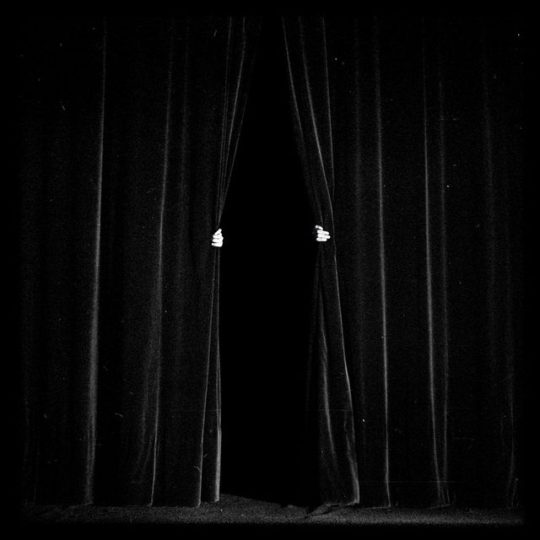
RECENSIONE: Be Forest - Knocturne (Wwnbb, 2019)
Con il terzo album, intitolato Knocturne, il trio pesarese Be Forest composto da Erica Terenzi, Costanza Delle Rose e Nicola Lampredi, si conferma un’eccellenza italiana a livello internazionale e lo fa rimanendo convinto del percorso ormai intrapreso da quasi dieci anni che, seppur con lentezza, ha dato i suoi frutti. In Knocturne il gruppo non ricerca scorciatoie o linguaggi comunicativi più convenienti e non si lascia trascinare in sospettate conversioni all’indie italiano, ma indisturbato e con purezza, continua a guardare l’orizzonte come ha sempre fatto, trovando le atmosfere oniriche dello shoegaze e l’inquietudine del post-punk, prediligendo, ancora una volta, la lingua inglese ed una narrazione fortemente concettuale.
Con una certa drammaticità, l’album si presenta in un involucro di velluto nero che altro non è che la tenda di un sipario. Scostata, ad un certo punto, da due bianche mani che spuntano da dietro, senza identità ma fortemente espressive, rivela un nero assoluto, dentro il quale viene inghiottita la luce del palcoscenico. Uno scenario surreale, fatto di contrasti, che spiega bene il contenuto musicale del disco ed in qualche modo anche l’intenzione degli artisti. La loro volontà di rimanere se stessi e mostrarsi, così per come sono, al pubblico, con una trasparenza tale da aprire un abisso scurissimo dal quale, però, emergono candidi, incontaminati e luminosi.
youtube
Il suono di Knocturne è mantenuto il più possibile analogico ed alla fine questo è un disco scarno e minimale, per quanto la produzione risulti stratificata e a lungo meditata. I Be Forest si fanno infatti affiancare da Steve Scanu con la produzione e da Josh Bonati con il mastering - non a caso quest’ultimo è stato a lavoro con Slowdive, Wild Nothing, Mac Demarco e Zola Jesus. Il risultato è fatto di penombre e di bui assoluti, in qualche modo confortanti, un abisso inspiegabile nel quale riesci a vedere la tua immagine proiettata e, quindi, a capire te stesso. Tra le varie tracce, i comuni denominatori sono innanzitutto l’approccio new wave, un pò post-punk ed un pò gotico, mischiato con il meno angusto shoegaze e le atmosfere traslucide dream pop. Poi si susseguono sussurri e chitarre imbevute nel riverbero, leggere, sfumate ed espanse nell’immateriale, a contrasto coi colpi di tamburo profondi ed importanti che scandiscono un tempo rallentato, quasi cristallizzato, e pongono grande enfasi sulle canzoni richiamando l’imponenza di inni di battaglie lontane: insomma, un album nel quale i confini musicali non sono ben chiari, ma che ripesca i suoni dagli abissi anni 80′ con maestria. Da un lato può risultare esageratamente omogeneo o forse sonnolento, ma dall’altro il percorso di Knocturne è di grande coerenza e intensità, direi addirittura che l’aspetto più sorprendente del disco è proprio la sua organicità, il suo saper scorrere fluido e senza pesantezze.
Nell’uniformità di quest’album bisogna lanciarsi, confondendo i limiti tra un brano ed un altro, immergersi e perdere la concezione del tempo. Tuttavia, al fine dell’orientamento, Knocturne è anche un progetto pensato astrattamente diviso in due atti: una scelta interessante che apre possibilità d’interpretazione. Si inizia proprio con la cinematica e strumentale Atto I, una sorta di ouverture tesa e magnifica dove si riesce a percepire il peso di un’evocazione antica, data dal suono di un corno in lontananza come una sorta di richiamo, di marcia spirituale sulla propria coscienza. Proseguendo l’ascolto ci si sente sempre più proiettati fuori, all’esterno, e con la più moderna Empty Space inizia ad aprirsi la riflessione, delicata ed ambigua, stendendo col suo finale un ponte per accedere alla successiva Gemini, una cavalcata incalzante ed ammaliante nell’ignoto. Sigfrido è la traccia più centrale dell’album, cinque minuti austeri di trance, sciolti nel lisergico canto e nella culla delle chitarre diffuse. “Give me a reason to stay / Here I am like a bolt trying to crash into the ground”.
youtube
A bussare ancora nella notte, continuando ad addentrarsi nell’oscurità, c’è Atto II, incredibilmente ipnotica e tribale come la sua controparte, e la romantica ma sinistra Bengala che segue una circolarità perfetta. “All of us are lost in this hell / But I sit in the hum of a new sun”. Tutto suona tremendamente tetro e seducente, un drappo di incubi e di introspezioni personali, storie nascoste come lo è il volto in copertina. Plumbei ma mai angoscianti, sfruttando l’ondata di ritorno dei protagonisti storici dell’epoca shoegaze e facendo perno sull’eleganza, i Be Forest sono un orgoglio italiano che non ha nulla da invidiare ai più rinomati protagonisti della scena internazionale. Pur calati nelle tenebre, il trio formato da Costanza, Erica e Nicola può scorgere un futuro luminoso.
TRACCE MIGLIORI: Gemini; Sigfrido; Atto II; Bengala
TRACCE PEGGIORI: You, Nothing
CLICCA QUI PER LA VALUTAZIONE FINALE
#BE FOREST#knocturne#wwnbb#2019#shoegaze#dream-pop#gazemoil#recensione#review#music#musica#musicale#recensioni
2 notes
·
View notes
Text
Unkept by SRSQ b/w Temporal Love
#music#srsq#kennedy ashlyn wenning#kennedy ashlyn#josh bonati#jorge elbrecht#jorge alberto elbrecht#artwork#jess garten#nathaniel young#daisrecords#dais records#dais#dreampop#dream pop#Bandcamp
36 notes
·
View notes
Text
Boldy James & Sterling Toles - Birth of Bold (The Christening)
Boldy James - Lead vocals
Sterling Toles - Producer (Ensoniq EPS, VS-1880, Alesis Ion, Vibraphone)
Josh Bonati - Mastering
Wes Taylor - Design
Ian Fink - Wurlitzer, Synth Bass
Asante - Vocoder
Emily Rogers - Bass Guitar
Rafael leafaR - Ewi
Excerpt: Nat Morris (The Scene)
From Manger on McNichols, released July 22, 2020
1 note
·
View note
Text
Red Fang, Windhand, & Pelican Live Show Review: 10/29, House of Vans, Chicago

BY JORDAN MAINZER
In what has become an annual tradition, Wolfbat Studio's Dennis McNett has put on Hallowolfbat, a self-described “visual conjuring” involving enormous, spooky puppets and costumes, featuring performances by various metal bands. Saturday night at House of Vans in Chicago, with plenty of crowd members (and even some band members) dressed up, Portland hard rockers Red Fang, Richmond doom greats Windhand, and local instrumental heroes Pelican provided a conjuring of their own to go along with a decked out venue.
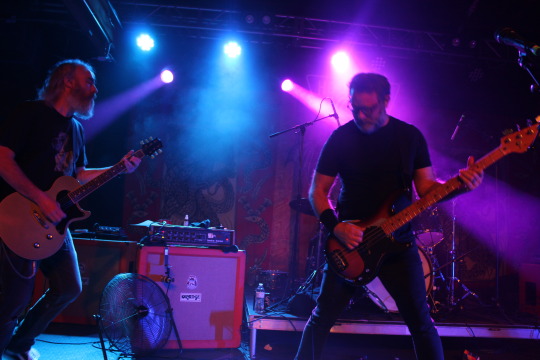
The headliners were Red Fang, whose most recent album is the pandemic-delayed Arrows (Relapse) from last year. They performed a couple tracks from the record, like the grunge-adjacent (and quintessentially hilariously titled) “Unreal Estate”, but perhaps as the show was somewhat of a one-off, special event, they prioritized their back catalog. From the rolling rock of Murder the Mountains’ “Malverde” to Whales and Leeches’ supremely catchy “Blood Like Cream”, Red Fang were clearly the most throttling band of the night, combining the camp of Halloween with real thrills in the form of bluesy sludge and mighty riffs. Bryan Giles and Aaron Beam’s dual vocals on “Into the Eye” were the forceful complement to John Sherman’s thunderous drums. “Prehistoric Dog” was every bit the bloodthirsty, hook-filled, should-have-been-a-hit anthem it was since it led off the band’s self-titled compilation album. On the feline end of the animal spectrum, before playing two-and-a-half-minute burner “Hank is Dead”, Giles called out the person in the crowd wearing a costume consisting of a grave with a cat ghost, before declaring, “This song is about that costume.” Ever foreboding and prescient while having loads of fun, Red Fang ruled.

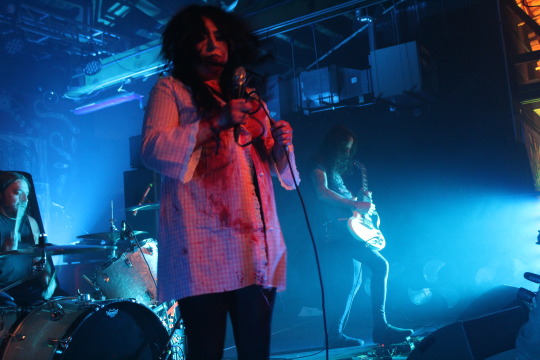
Windhand provided the intangible atmosphere between the technical peaks and valleys of Pelican and the catchy brutalism of Red Fang. Entering the stage to sounds of menacing organ, creaking floors, and maniacal laughing, as well as--what else--a strong smell of burning incense, the band gave a stellar set of creeping doom. Live, singer Dorthia Cottrell’s voice was further obscured in the mix behind Garrett Morris’ piercing wah wah guitars, echoing and spectral. Parker Chandler’s crunchy bass and Ryan Wolfe’s strong, deliberate drumming were the ultimate backbone on songs like “Libusen” and Eternal Return highlight “First to Die”. As the band hasn’t released a new studio album since 2018, they played consistently from across their discography, showing how consistently brooding their material is.

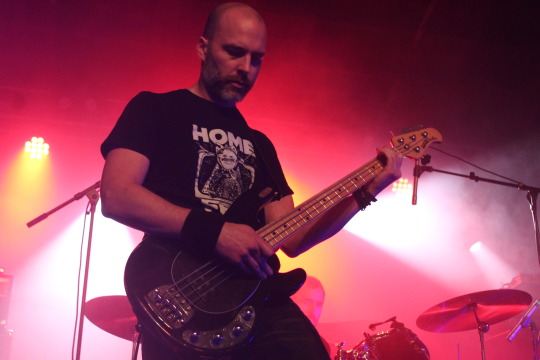
As for Pelican, they’re looking forward by looking back. For one, this year, they reissued their debut album Australasia via Thrill Jockey and are set to do the same with City of Echoes next year. Originally released via Hydra Head and long out of print, the albums both contain Josh Bonati remasters, and the latter a bonus LP of demos, alternative takes, and tracks from the rare Pink Mammoth EP. Best, they’ve welcomed back Laurent Lebec, their original guitarist. Saturday night’s highlights included setlist opener and Echoes highlight “Dead Between the Walls” and Australasia’s slow, twinkly, gorgeous title track and tempo-changing “Drought”. Each string player in the band showed off their own performative style--guitarist Trevor de Brauw preferred headbanging, bassist Bryan Herweg grooving, Lebec bouncing--but offered a collective storm. They made the guitars sound like stabbing jolts of lightning or sirens, as Larry Herweg’s drums built up and crashed. Of all the artists, bands or puppeteers, Pelican were the true wizards.

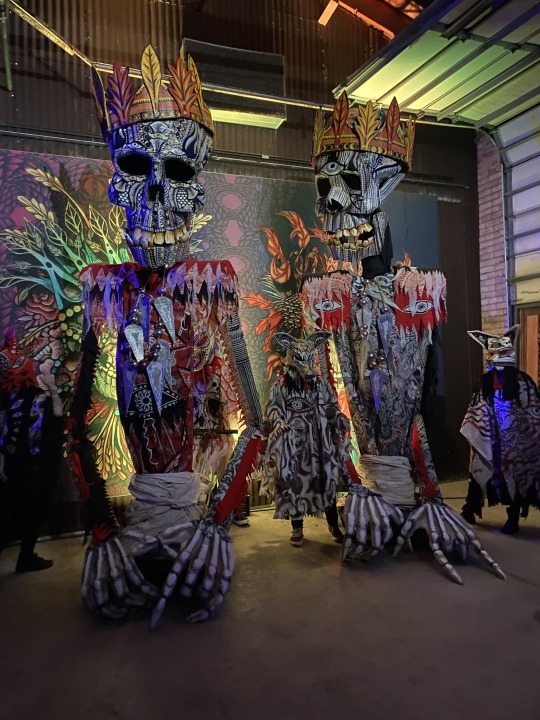
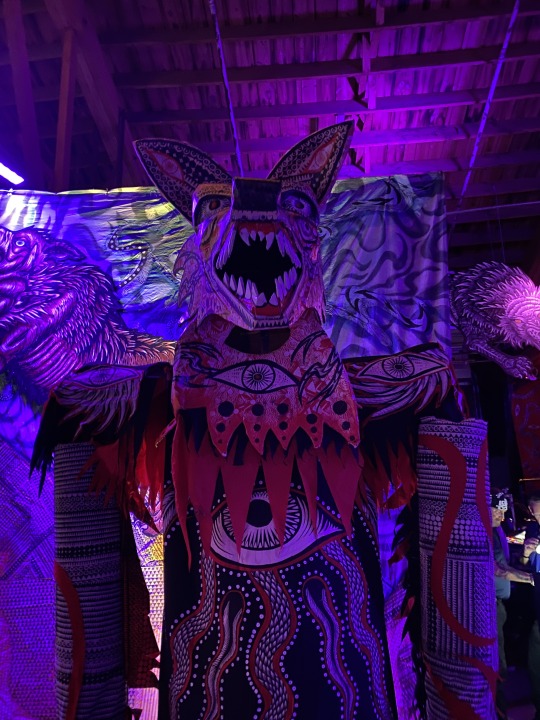

#live music#red fang#windhand#pelican#house of vans#wolfbat studio#dennis mcnett#parker chandler#laurent lebec#relapse#thrill jockey#hallowolfbat#relapse records#arrows#murder the mountains#whales and leeches#halloween#bryan giles#aaron beam#john sherman#dorthia cottrell#garrett morris#ryan wolfe#eternal return#australasia#hydra head#city of echoes#josh#pink mammoth#trevor de brauw
1 note
·
View note
Photo
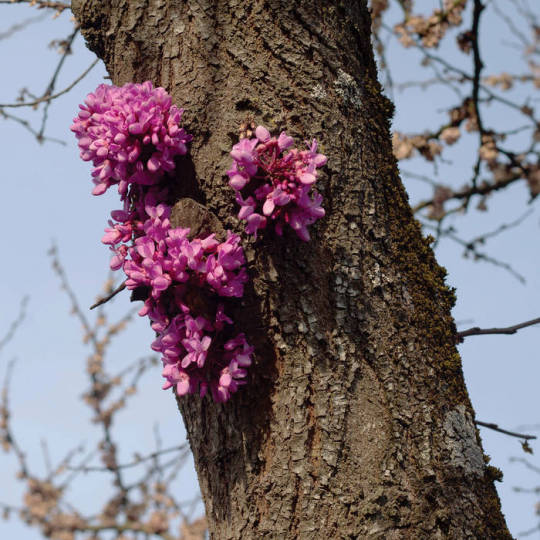
(▶︎ Meeting with a Judas Tree | Duval Timothyから)
Meeting with a Judas Tree by Duval Timothy
Recorded 2019 - 2022 Primarily recorded at my home studio in South London, Carrying Colour studio in Freetown, my old studio in Rotherhithe Old Police Station, and Casa Mahler in Spoleto. Recorded on different pianos, including an upright in Freetown that had lost the felt of its hammers due to the humidity creating a harpsichord-like sound as the raw wood struck the strings. Other prominent instruments featured are Moog Grandmother, double bass, electric guitar and Juno-G. Part of the piano recordings on 'Up' and 'Drift' were composed and recorded through April 2021, whilst I was an artist in residence at the Mahler & LeWitt Studios, Spoleto, for the 'Mahler, The Song of the Earth' project in partnership with Mahler Foundation. During the residency, I was studying and creating work in response to the life and work of Gustav Mahler, in particular 'Das Lied Von Der Erde' (The Song of the Earth) — a vast song cycle engaging with nature, forgiveness, friendship, and mortality themes. While making this record, I wanted to explore what the natural environment means personally. I went on many trips into nature to engage with plant life and natural materials. These included everyday strolls around South London, walks with my mum in the hills surrounding Bath (Up), hikes through Freetown, the hills of Spoleto, up line in Ghana and nature sanctuaries in Sierra Leone (Wood). I found incredible examples of nature in all of these contexts, which I felt personally close to. I made field recordings with my phone or Zoom recorder, documenting various birds, insects, monkeys, bats, plants, trees, stones and so on, which are all on the record. クレジット2022年11月11日リリース All music by Duval Timothy Produced by Duval Timothy Additional piano & synth on Wood ft. Yu Su by Yu Su Additional guitar by on Wood by Kiran Kai Co-writing on Wood by Yu Su and Thunder by Fauzia Additional production on Up by Vegyn with voice field recording by Erica Timothy Live effects on Thunder ft. FAUZIA by FAUZIA Additional production on Drift ft. Lamin Fofana by Lamin Fofana Mixed by Philip Weinrobe at Sugar Mountain Mixed for Dolby Atmos by Brian Bender at The Motherbrain Mastered by Josh Bonati Carrying Colour Records 2022 Published by Decca Publishing, a division of Universal Music Group Ltd.
0 notes
Audio
Nathan Salsburg - Third (2018)
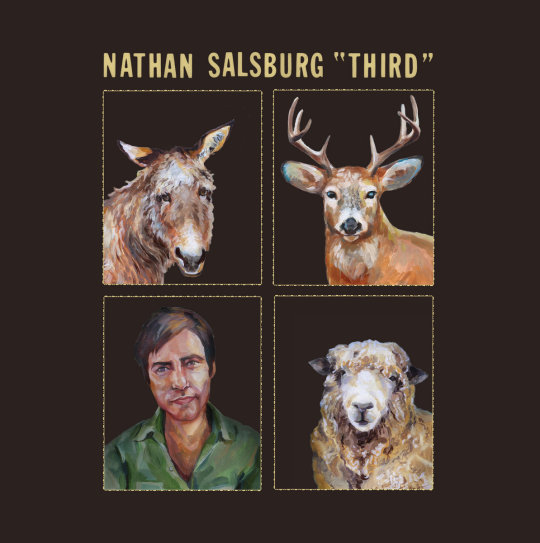
https://www.noquarter.net/
#nathan salsburg#third#2018#2010s#no quarter#folk#americana#usa#daniel martin moore#josh bonati#sarah lasley#nic jones#ishbel macaskill#Murdo Ferguson#audio
1 note
·
View note
Text
Perfect Blue Vinyl Returns in Deluxe Audiophile Edition

Tiger Lab Vinyl is getting ready to bring Masahiro Ikumi and Yuji Yoshida's original score for Satoshi Kon's Perfect Blue anime film back to vinyl. The Deluxe Audiophile Edition is set to go up for pre-order today starting at 8:00am Pacific Time, complete with multiple color options along with a traditional 180gram black vinyl option for purists.
RELATED: Elfen Lied Soundtrack Returns to Vinyl After Being Sold Out for Years
Pressed over two LPs, the Audiophile Edition has been remastered and lacquers have been cut by Josh Bonati. Shipping kicks off at the end of May, and you can see the packaging along with the Mima Meld and Perfect Pink color options below.






Tracklist:
Side A 1.Mima's Theme
Side B 2. Nightmare 3. Virtual Mima
Side C 4. Uchida's Theme 5. Nightmare [Kaminari Version]
Side D 6. Virtual Mima [Voice Version]
Tiger Lab also has official Perfect Blue merch on the way, including pink t-shirts, tank tops and zip-up hoodies.

-------
Joseph Luster is the Games and Web editor at Otaku USA Magazine and the Editor-in-Chief of Sci Fi Magazine. You can read his comics at subhumanzoids. Follow him on Twitter @Moldilox.
By: Joseph Luster
1 note
·
View note
Text
DRAB MAJESTY TO RELEASE ‘UNARIAN DANCES’ + ‘UNKNOWN TO THE I’ FOR THE FIRST TIME EVER ON VINYL FORMATS.
Dais Records will re-issue these landmark releases on May 21st. // Pre-orders are available now.

"Dark, mysterious lyrics juxtapose powerful, enveloping synths, suspending the listener somewhere between psychedelia, history, and reality." - Paste Magazine
Drab Majesty have brought a new dispatch for 2021: the group will make their first two transmissions — their debut release Unarian Dances as well as the Dais Records label debut Unknown to the I — available for the first time ever on vinyl formats. These milestone cassettes were released in 2012 and 2015 respectively, along with inclusion on the 2015 CD compilation Completely Careless, but were never committed to vinyl. The Unarian Dances and Unknown to the I 12inch re-issues finally bring the entire Drab Majesty catalog to vinyl and will be available on May 21st.
Self released in 2012, Unarian Dances came out on cassette format, originally limited to 100 copies. The songs on this EP would eventually make their way onto the Completely Careless CD collection as bonus tracks, but have never been available on LP format until now. Unarian Dances was mastered by Josh Bonati and features beautiful new packaging by Nathaniel Young — cover art is below.
Fast forward to 2015 when Drab Majesty marked their label debut for Dais Records with the release of the Unknown to the I cassette, which featured the title track that would later appear on the group’s first full-length Careless. The additional early cuts “Saturn Inc.” and “Ultra Violet” have previously only been available on digital or as CD bonus tracks. Now, these songs are finally made available on vinyl in 45 RPM 12 inch format, bringing all early Drab Majesty material from the Careless-era (2015-2015) to vinyl. Unknown to the I was also mastered by Josh Bonati and features beautiful new packaging by Nathaniel Young — cover art is below.
For the uninitiated, Drab Majesty is the project started by multi-instrumentalist Deb DeMure. With their combination of reverb-drenched guitars, synth bass lines, lofty vocals and rhythmic drum machine beats, Drab Majesty eloquently blends classic New Wave and hints of early 4AD with futuristic originality. Since joined by Mona D on keyboards and vocals, Drab Majesty elevated their sound and presentation and released 2017’s landmark LP The Demonstration to great critical acclaim. The duo went on to tour the world several times over with the likes of Cold Cave, Deafheaven, Uniform and more. Following, Drab Majesty would write, record and release their most recent full-length Modern Mirror in July of 2019 and headline a massive North American tour in support of it. Marking the band’s most collaborative effort to date, Modern Mirror was produced by Josh Eustis (Telefon Tel Aviv), mastered by Dave Cooley, and includes appearances from Jasamine White-Gluz (No Joy) and Justin Meldal-Johnson (NIN, Beck, M83, Air). More transmissions will follow in due time.
Unarian Dances and Unknown to the I are available for pre-order now directly from Dais Records as well as Bandcamp ahead of their release on May 21st.


0 notes